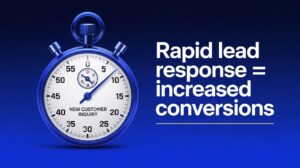A website is the face of your brand that creates a lasting impression and builds your online presence. In digitization, where first impressions are often made within seconds, having a visually appealing and functional website is essential.
It’s not just about making it beautiful- your site should be easy to navigate, with a clean, minimalist design that avoids clutter and confusion.
Isn’t it refreshing to visit a website with a perfect color palette that’s easy on the eyes? Soft, soothing tones with the right balance of contrast make the browsing experience pleasant while avoiding harsh, neon colors that can overwhelm the user.
In 2025, the focus of web design is shifting toward simplicity, where the design flows effortlessly and visitors don’t have to struggle to find what they need. But design isn’t just about looks.
Your website should be attractive, yes, but it must also be functional. The perfect website blends visual beauty with user experience, ensuring smooth navigation, fast load times, and an intuitive layout.
As we progress, the top web design trends focus on creating an ambient, user-friendly experience that keeps visitors engaged and returning for more. Let’s explore the website design trends for 2025 that are set to transform the digital landscape, making sites not just visually stunning but incredibly functional too.
Minimalism & Clean Design
Simplicity is the key to modern web design, and minimalism will continue to dominate in 2025. Gone are the days of overcrowded websites filled with too many elements, buttons, or text. Instead, businesses are opting for clean designs with fewer distractions, making it easier for visitors to focus on what matters.
Minimalism is all about using only what is necessary. Adore your visitors with modern aesthetics evoking a sense of nostalgia and timeless beauty. When visitors land on a site, they should immediately understand its information. In places like New York, where users expect fast, intuitive browsing, minimalist design ensures a smooth, streamlined experience.
The website design trend’s appeal is a blend of classic luxury with contemporary minimalism offering an amazing user experience. One of the crucial elements of minimalist design is white space blank areas between content. This might seem like wasted space, but in reality, it helps guide the user’s eye to key sections of a webpage.
White space increases readability and makes the design feel open and uncluttered, allowing important features like calls-to-action (CTAs) or product details to stand out.
Minimalism doesn’t mean boring. It’s about thoughtful design choices that put functionality and user experience first. Well-executed minimalism can make a website feel more modern and professional, ensuring that users get to the point quickly without being distracted by unnecessary elements.
Dark Mode & Accessibility
Dark mode is more than just a trendy feature—it’s becoming a staple for web design. Dark mode replaces the traditional white backgrounds with darker shades, providing a more eye-friendly option, especially in low-light environments. It’s sleek, modern, and, most importantly, practical for users who prefer it for reading or browsing at night.
Dark mode website design is one of the super popular styles all thanks to linear. Everyone was shifting on the bandwagon because it looked fantastic.
Beyond aesthetics, dark mode is about enhancing accessibility. For users with visual impairments or those sensitive to bright light, dark mode can offer a more comfortable browsing experience. It reduces the strain and makes it easier to focus on content for extended periods.
In an era where digital wellness is prioritized, offering dark mode options is a small but impactful change that web designers are embracing. Many platforms like Google, Facebook, and Twitter have already integrated dark mode as a default option. Expect to see more businesses, especially in tech-savvy cities like New York, adding dark mode to their websites to cater to user preferences.
Benefits of Dark Mode
- Reduced eye strain, especially in low light conditions.
- Longer battery life on mobile devices with OLED screens.
- A sleek, modern look that appeals to tech enthusiasts.
While dark mode can significantly improve user experience, designers need to ensure proper contrast between text and background. Without the right balance, text can become harder to read, defeating the purpose of dark mode in the first place.
Micro-Interactions
Ever noticed those small, delightful details when you hover over a button, and it slightly changes color or a notification bell shakes? Those are called micro-interactions and they are set to take center stage in UI/UX design for 2025.
Micro-interactions are small animations that provide subtle feedback to users. They are often small animations or changes that occur when a user interacts with a feature, like clicking, hovering, or scrolling. They might seem insignificant, but micro-interactions play a massive role in engagement and user experience.
For example:
A subtle animation when a button is clicked provides feedback, letting users know their action was successful.
A menu expanding slightly when hovered over gives users a sense of movement and interaction.
A shopping cart icon shaking when an item is added makes the experience more dynamic and satisfying.
The beauty of micro-interactions lies in their ability to create a connection between the user and the interface. They make users feel like the website is responsive and reactive to their actions, resulting in a more immersive experience.
Incorporating micro-interactions is a way to make websites feel more intuitive without overwhelming the user. They add polish to UI/UX design and make interactions feel more natural and engaging, keeping visitors on your site longer.
Voice User Interface
The way we access information is changing- instead of typing into Google, we now ask a question or make a demand. With the increasing use of smart devices and voice assistants like Alexa, Siri, and Google Assistant, Voice User Interface is becoming a critical aspect of web design in 2025. More websites are incorporating voice commands and voice search options making it easier for users to interact without having to rely solely on traditional input methods like typing or clicking.
This trend is particularly relevant as more people are using voice search on mobile devices. Voice interactions allow users to access information quickly and hands-free, which is especially convenient in situations where typing isn’t ideal, such as driving and multitasking.
For web designers, incorporating VUI means creating seamless voice experiences. This requires focusing on how users speak, what they ask for, and how to respond in a natural, conversational tone. Websites need to understand spoken language which can vary in phrasing and accent. This presents new challenges but the payoff is worth it as users increasingly expect voice integration.
Advantages Of VUI in Web Design
- Allows for hands-free browsing, enhancing convenience.
- Improves accessibility for people with disabilities or mobility issues. Adapts to user needs in real-time, offering a personalized, responsive experience.
- Adapts to user needs in real-time, offering a personalized, responsive experience.
However, designing for voice interaction means thinking about user flows differently. Instead of relying on visual cues, designers need to ensure the website responds accurately to voice commands and provides relevant feedback without confusing users. While this is still an emerging field, expect more websites to embrace voice-first design in the coming year.
Wrapping Up
As we move into 2025, New York web design continues to evolve with a strong focus on user experience, accessibility, and interactivity. Trends like minimalism, dark mode, micro-interactions, and voice user interfaces are driving the next wave of digital innovation.
Whether you are designing a website for a business in New York or anywhere else, these website design trends offer practical ways to improve engagement, accessibility, and the overall look and feel of your site.
By staying on top of these emerging trends, your website can offer an experience that not only looks good but also functions seamlessly keeping visitors coming back for more.
Frequently Asked Questions
What is predicted for web design in 2025?
2025 is poised to be a year of innovation and evolution in web design. Some key trends involve:
- Increased focus on accessibility
- AI-powered design
- Voice User Interfaces
- Micro-Interactions
- Dark Mode
What is the next big thing in Web design?
While it’s challenging to pinpoint one single “next big thing,” several trends are emerging as significant:
- Augmented reality (AR) and virtual reality (VR)
- WebAssembly
- Serverless Architecture
What are responsive design trends in 2025?
Responsive design will remain a cornerstone of web development. Some key trends include:
- Adaptive design: Websites will adapt to different screen sizes and orientations more seamlessly.
- Foldable device optimization: Websites will be designed to accommodate foldable smartphones and tablets.
- Voice-first responsive design: Websites will be optimized for voice interactions across different devices.
What will technology look like in 2025?
Technology will be more intelligent and immersive, with advancements in AI, 5G, AR, and VR shaping industries and everyday life. Seamless integration of smart systems and automation will enhance connectivity, personalization, and real-time experiences.
How will AI impact web design in 2025?
AI will play a critical role in 2025 by automating repetitive tasks, enhancing user experiences through data-driven personalization, and enabling predictive design features. Tools powered by AI will help designers prototype faster and optimize layouts dynamically based on user behavior.





